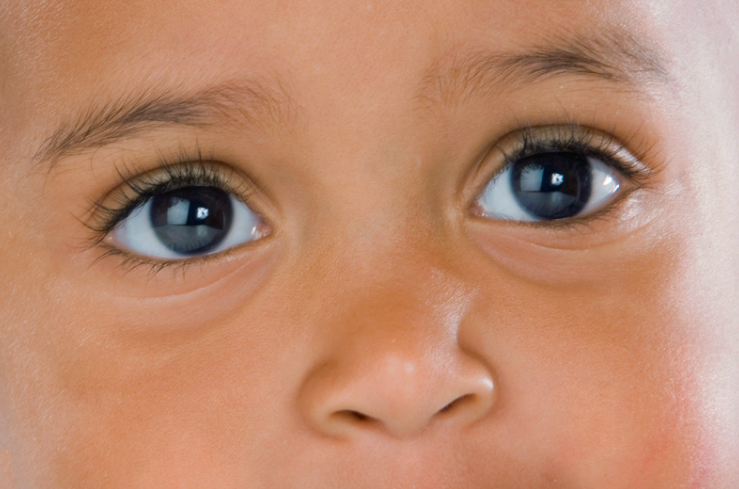Home » Routine Eye Exams Calgary » Eye Check Ups for Kids
Eye Checkups for Kids
When should my child have their first eye exam?
Your child’s first eye exam should be at 6 months of age. As with all children, the cost of the exam is covered by Alberta Health.
During an eye exam for babies and toddlers, your optometrist will assess the structure and function of your baby’s eyes and visual system. The most common issues that could impact visual development will be screened for. We will also discuss what is normal and abnormal and what to expect as your child grows older. Your child does not need to respond to any questions, and the exam takes only 10 minutes.
Children of school age are seen annually to ensure that their vision is not affecting their learning and school work. In fact, 1 in 4 children diagnosed with a learning disorder actually has a vision problem. School screenings are not adequate to detect all vision issues. Alberta Health covers the cost of eye exams until your child turns 19. Book an exam for your child today!
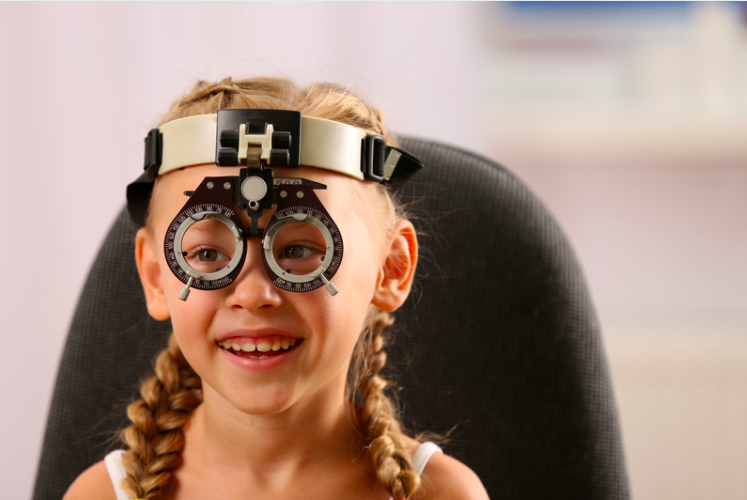
What's different with a kids eye exam?
Eye exams for children are different depending on their age. Babies are usually examined right from their car seat. Testing for this age group is primarily to screen for sight threatening issues, and is done objectively using a variety of scopes and handheld instruments. Toddlers are tested similarly, but we can test for more things as they can usually respond to questions and pictures. Your child’s eye routine exams are covered by Alberta Health and are critical to ensure proper visual development. If your child is 13 or older, visit our Teen Eye Exam section for further details on what to expect during a routine eye exam. Here are some answers to common questions on kid’s eye exams:
How do you examine a baby's eyes?
It may seem surprising to take your baby for an eye exam and the most obvious question parents have is how we can examine a baby’s eyes? Baby wellness eye exams require no verbal response. Their first eye health exam involves screening for sight threatening diseases such as congenital cataract, infantile glaucoma, retinoblastoma and anything that could potentially affect the normal development of the visual system. We have various handheld diagnostic instruments to aid in this process, and your baby can usually remain right in their car seat or stroller. Exams are painless and usually complete in 5 minutes, the attention span of the average little one!
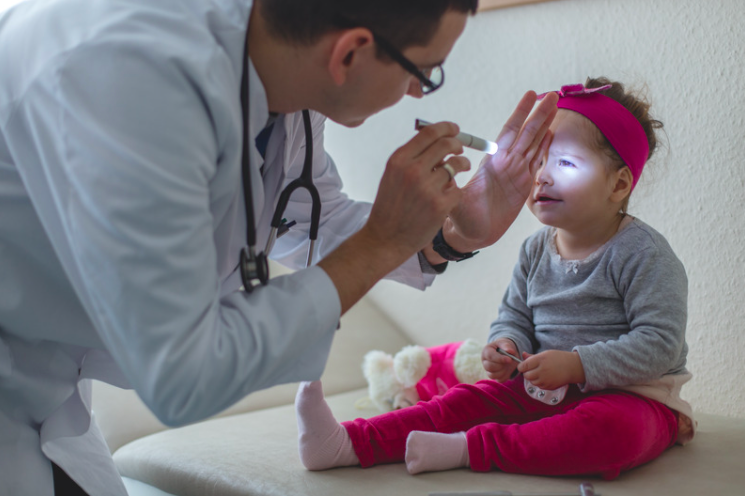
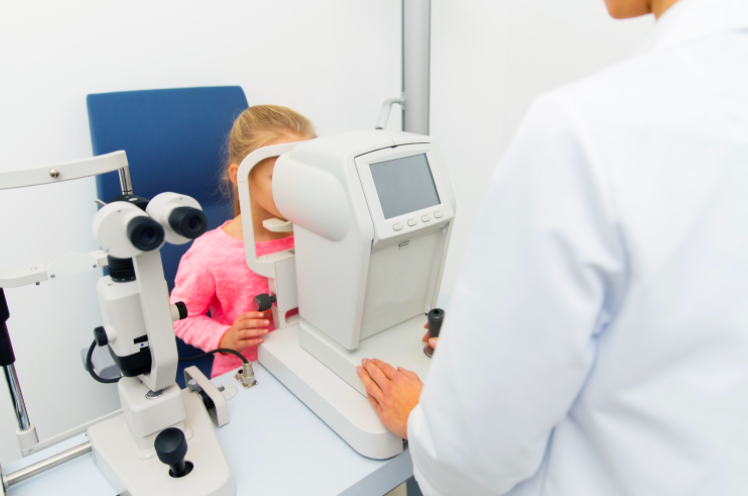
How often should I have my child's eyes checked?
If all goes well at your baby’s 6 month wellness eye exam, we schedule another eye exam at age 3, and annually thereafter. During their early years, your child will be able to respond to pictures and basic tests for vision, depth perception, color vision, and eyeglass prescription. We generally keep their attention using cartoons and games, and use automated equipment to obtain more data. Since the visual system is developing only until about age 8, we must ensure both eyes are receiving clear images and working together in order to prevent lazy eye (amblyopia). After this age, vision impairment due to inadequate development becomes difficult if not impossible to treat. If your child has any signs of vision impairment, we will talk to you about treatment options that may include eyeglasses, eye exercises and possible eye patching or vision therapy to ensure a lifetime of clear vision. Exams are generally scheduled annually through the school years to ensure they continue to see to their full potential!
Will my child's eyes get worse with glasses?
It is a common misconception that a child’s eyes get worse with glasses. In fact, the opposite is true. We now have reliable studies that show near-sightedness (myopia) will actually progress faster if not fully corrected with glasses. Myopia is related to excessive elongation of the eyeball and will not slow down with a reduced or absent eyeglass prescription. Furthermore, inadequate correction of far-sightedness or astigmatism will only lead to eye fatigue, squinting, and blurry vision that may lead to poor school performance and learning. Thankfully, we now have methods to slow the progression of near-sightedness, you can read more about how we help with myopia control.
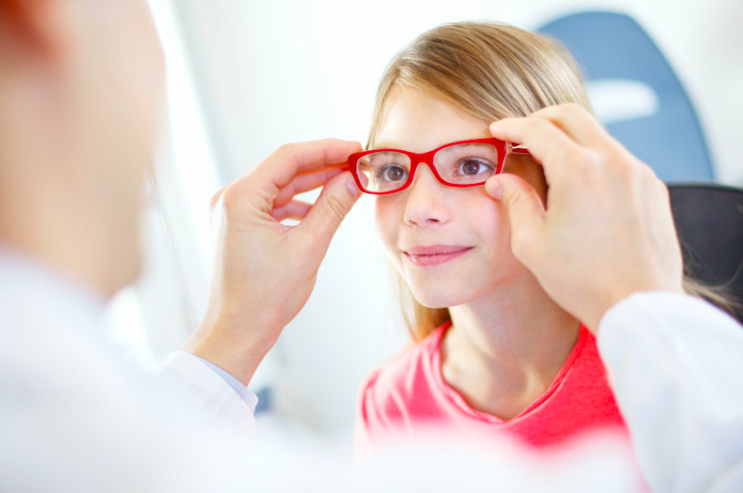
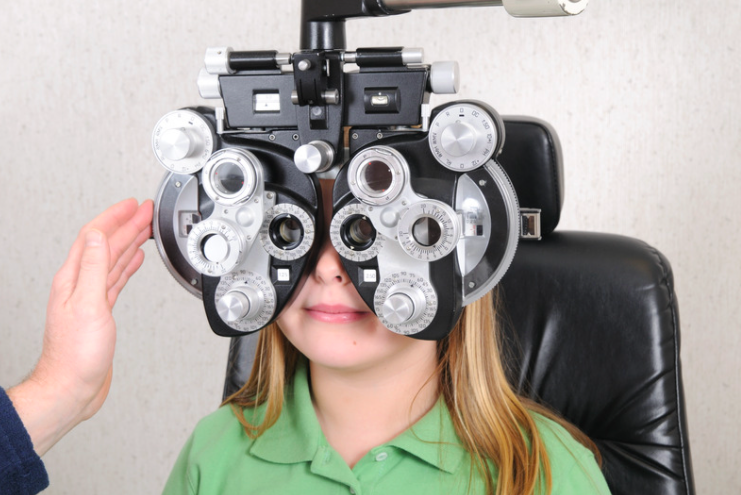
Why does my child need an eye exam if they see well?
A child cannot tell you if they have a problem if they do not know any different. This is especially true if one eye sees well, but the other does not. 80% of learning is visual, and up to 40% of children with learning disabilities have an undiagnosed vision problem. Lazy eye (amblyopia) is of particular concern. As noted earlier, if child has a lazy eye that is not corrected before the age of 8, the chances of ever seeing well out of that eye are extremely low. Having both eyes function together allows 40% better vision, and is important for depth perception and hand-eye coordination. A comprehensive examination is also important to screen for both eye diseases and systemic diseases that may have no symptoms.

